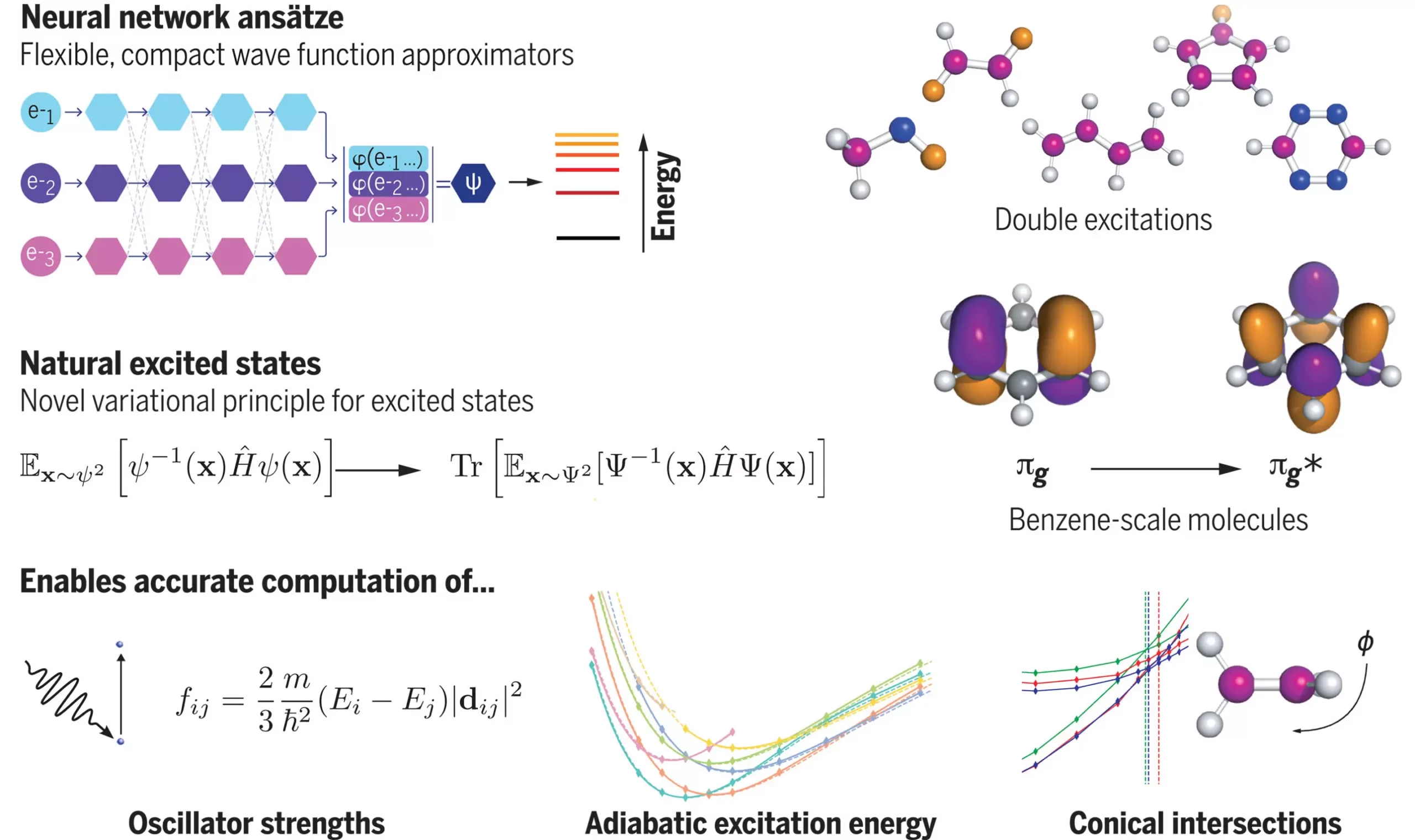In a groundbreaking study published in Science, researchers from Imperial College London and Google DeepMind have introduced a novel approach to modeling the states of molecules using neural networks. This research marks a significant advancement in the field of computational chemistry, offering a solution to the complex challenge of understanding how molecules transition to and from excited states. The implications of this study are far-reaching, with potential applications in material prototyping, chemical synthesis, and the development of advanced technologies.
The Challenge of Molecular Transitions
When molecules are exposed to high energy stimuli, such as light or heat, their electrons can transition to temporary new configurations known as excited states. The precise amount of energy absorbed and released during these transitions creates a unique fingerprint for each molecule, influencing the performance of various technologies and biological processes. However, modeling these excited states is incredibly difficult due to the quantum nature of electrons, which exist as probabilities rather than certainties.
Lead researcher Dr. David Pfau highlights the complexity of representing quantum systems and the challenge of assigning probabilities to all possible electron configurations. Traditional methods fail to capture the vast space of potential configurations, making accurate modeling nearly impossible. However, the team’s innovative approach leverages deep neural networks, specifically the FermiNet (Fermionic Neural Network), to compute the energy of atoms and molecules with unprecedented accuracy.
Through a series of tests on complex molecules, such as the carbon dimer, the researchers demonstrated the effectiveness of their method. By achieving a mean absolute error of 4 meV, significantly closer to experimental results than previous methods, the team validated the potential of neural networks in computational chemistry. Dr. Pfau’s remarks on the method’s success in modeling challenging systems with remarkable accuracy highlight the transformative impact of this research on the future of molecular modeling.
The integration of neural networks into molecular modeling represents a paradigm shift in computational chemistry, offering a powerful tool for researchers to explore the behavior of molecules in unprecedented detail. By harnessing the capabilities of artificial intelligence, scientists can accelerate the discovery and development of new materials, chemical reactions, and technologies. The study’s findings not only advance our understanding of molecular transitions but also pave the way for groundbreaking innovations in a wide range of scientific disciplines.


Leave a Reply